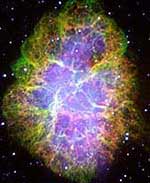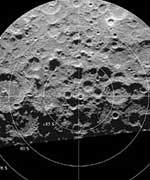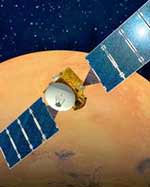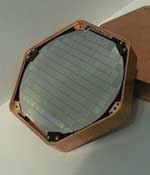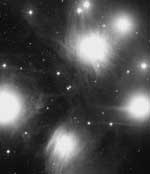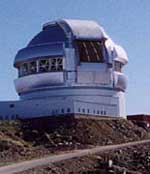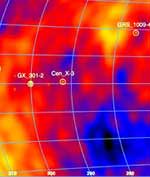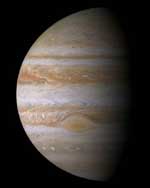
Image credit: NASA/JPL
The team responsible for the Cassini spacecraft’s imaging system have produced the most detailed mosaic image of Jupiter ever created – the whole planet is visible down to a resolution of 60 km. The spacecraft took a series of 27 images over the course of an hour on December 29, 2000. The separate photos were then blended together on a computer to account for Jupiter’s rotation and the movement of the spacecraft.
This true color mosaic of Jupiter was constructed from images taken by the narrow angle camera onboard NASA’s Cassini spacecraft starting at 5:31 Universal time on December 29, 2000, as the spacecraft neared Jupiter during its flyby of the giant planet. It is the most detailed global color portrait of Jupiter ever produced; the smallest visible features are ~ 60 km (37 miles) across. The mosaic is composed of 27 images: nine images were required to cover the entire planet in a tic-tac-toe pattern, and each of those locations was imaged in red, green, and blue to provide true color. Although Cassini’s camera can see more colors than humans can, Jupiter here looks the way that the human eye would see it.
Cassini’s camera is digital, much like today’s popular cameras, and it takes images in each color separately as different spectral filters are rotated in front of its light-sensitive detector. Over an hour was required for this portrait. Jupiter rotated during this time, so the face it presented to the camera, and the lighting on its moving clouds, were constantly changing. In order to assemble a seamless mosaic, each image was first digitally re-positioned to reflect the planet’s appearance at the instant the first exposure was taken. Then, the lighting variation across each image was removed, and the mosaic was re-illuminated by a computer-generated ‘Sun’ from a direction that allowed all imaged portions to appear in sunlight at once. The result, which was slightly contrast-enhanced to bring out subtleties in the Jupiter atmosphere, is a view that the spacecraft would have had at the same distance from the planet but ~ 80 degrees solar phase.
Everything visible on the planet is a cloud. The parallel reddish-brown and white bands, the white ovals, and the large Great Red Spot persist over many years despite the intense turbulence visible in the atmosphere. The most energetic features are the small, bright clouds to the left of the Great Red Spot and in similar locations in the northern half of the planet. These clouds grow and disappear over a few days and generate lightning. Streaks form as clouds are sheared apart by Jupiter’s intense jet streams that run parallel to the colored bands. The prominent dark band in the northern half of the planet is the location of Jupiter’s fastest jet stream, with eastward winds of 480 km (300 miles) per hour. Jupiter’s diameter is eleven times that of Earth, so the smallest storms on this mosaic are comparable in size to the largest hurricanes on Earth.
Unlike Earth, where only water condenses to form clouds, Jupiter’s clouds are made of ammonia, hydrogen sulfide, and water. The updrafts and downdrafts bring different mixtures of these substances up from below, leading to clouds at different heights. The brown and orange colors may be due to trace chemicals dredged up from deeper levels of the atmosphere, or they may be byproducts of chemical reactions driven by ultraviolet light from the Sun. Bluish areas, such as the small features just north and south of the equator, are areas of reduced cloud cover, where one can see deeper.
Original Source: Arizona University News Release

